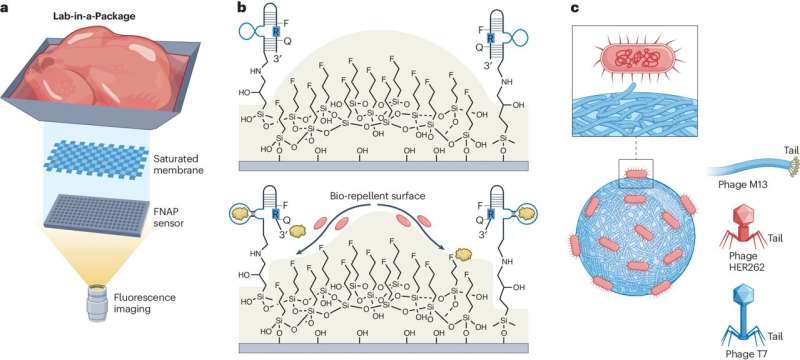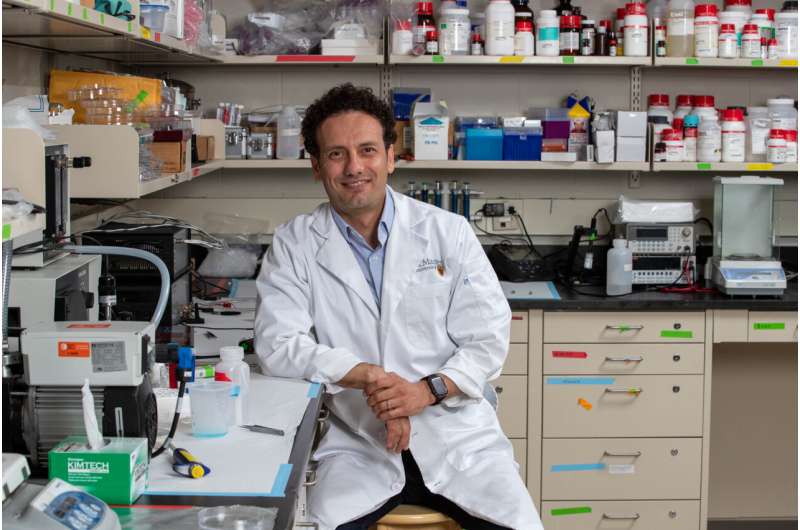This article has been reviewed according to Science X's editorial process and policies. Editors have highlighted the following attributes while ensuring the content's credibility:
fact-checked
peer-reviewed publication
trusted source
proofread
It may be time to eliminate the best-before date on food packaging, say smart packaging researchers

The inventors of a suite of tests that enable food packages to signal whether their contents are contaminated are working to bring producers and regulators together to get their inventions into commercial products, with the goal of preventing illness and reducing food waste.
Though the tests would cost just a few cents per package, food producers are reluctant to add costs that consumers will ultimately have to bear, say the McMaster researchers behind an article published in the journal Nature Reviews Bioengineering.
A system based on smart packaging, the researchers say, would save producers from reputational and practical costs associated with outbreaks, dramatically reduce food waste and reduce health care and lost-time costs associated with outbreaks. In all, the paper says, society would save hundreds of billions of dollars globally each year, more than justifying the cost of adding the technology to food packaging.
"On the one hand, people want to have safe food to eat. On the other, they don't want to pay more for their food, because prices are high already and seem only to be climbing higher," says the paper's corresponding author Tohid Didar, a biomedical engineer and entrepreneur. "We are eager to make people aware of the challenges that exist, and start a conversation between researchers, policy makers, corporations and consumers work together to come up with solutions for such challenges."
The researchers write that public agencies recognize the value of the new technology, and though they'd like to put it into play, they also know that introducing it would require sweeping changes to food regulations and packaging practices—changes that may face resistance.
It's a challenge the researchers recognize, but with so much potential benefit at stake, they say everyone will ultimately win once the technology comes into broad use.
The current practice of marking fresh foods with a "best before" or "consume by" date is arbitrary and far too conservative, the researchers say, often causing perfectly safe food to be wasted, which imposes huge costs that producers and consumers are already paying for, whether directly or indirectly.

Canada wastes $40 billion worth of food every year—more per capita than the US or UK, Didar explains. Discarding food unnecessarily also has significant social, economic and environmental costs, given concerns over scarcity and access to food, and the ecological impacts of throwing away unused food and packaging.
Since 2018, the group of McMaster engineers and biochemists behind the paper has invented and proven the viability of several packaging-based methods for detecting or halting spoilage, including:
- Sentinel Wrap: plastic wrapping that can detect and visibly signal when contents such as meat, cheese or produce has gone bad
- A hand-held test that produces real-time results that allow wholesalers and retailers using special readers to detect, isolate and withdraw specific lots of spoiled goods before they can be sold, avoiding huge recalls that affect entire categories of food
- Lab-on-a-package: a tiny, self-activating test incorporated into a tray of chicken, fish or meat, for example, which produces a visible signal when a product has gone bad
- A sprayable, food-safe gel composed of beneficial, organic bacteriophages, which eliminates harmful bacteria that cause food contamination.
The monitoring technologies are made to read biochemical signals from common culprits in spoilage, such as Listeria, Salmonella and E coli, using readily adaptable platforms, but getting them into the marketplace has been challenging.
"It's one thing to do research in the lab, publish papers and file patents, but it's another to have a product that's tangible—that people can use," says the paper's lead author Shadman Khan, a Ph.D. candidate and Vanier Scholar in Didar's lab. "We are building a collaborative network with government regulators and industrial partners. That is allowing us to see the big-picture issues and adapt to what we learn will and won't work."
The authors, who also include faculty members Yingfu Li, Zeinab Hosseinidoust and Carlos Filipe, have been working with producers in North America and Europe and government regulators including the Canadian Food Inspection Agency.
Changing the calendar-based food freshness and safety system to a detection-based system will be a huge effort, but in their paper, the inventors say it's past time to bring the technology up to date.
More information: Shadman Khan et al, Smart food packaging commercialization, Nature Reviews Bioengineering (2024). DOI: 10.1038/s44222-024-00190-5
Journal information: Nature Reviews Bioengineering
Provided by McMaster University





















